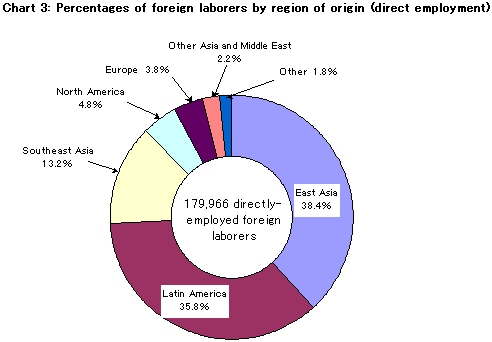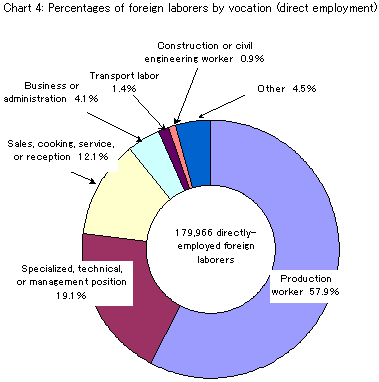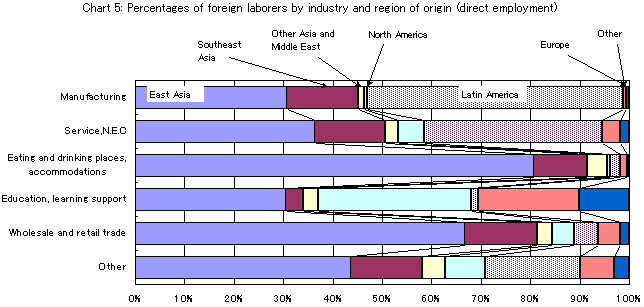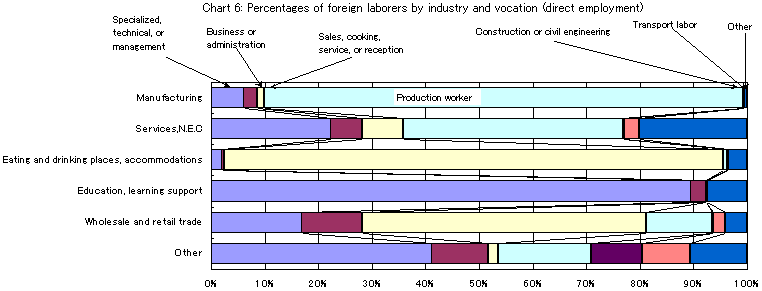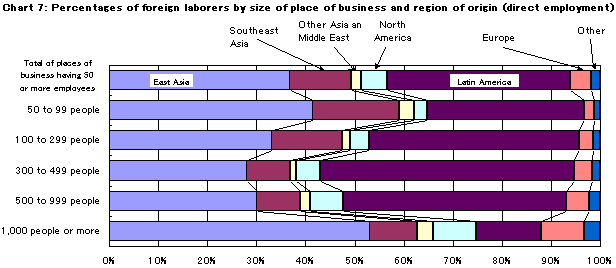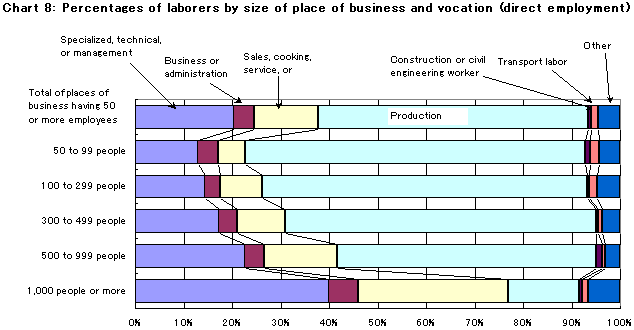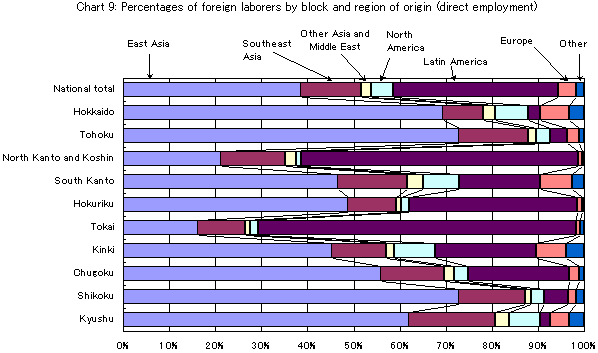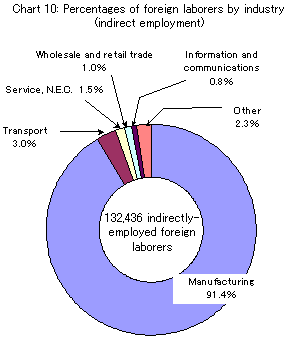The results of the recent survey (as of June 1, 2004) were tabulated from reports submitted by places of business that employ foreign laborers directly (hereinafter, "direct employment") or in which foreign laborers work through labor dispatch, contracting, etc. (hereinafter, "indirect employment"). This fiscal year, 145,346 places of business were asked to submit reports (a decrease of 5.6% compared to the previous year). A total of 90,623 places of business (including places of business that do not employ foreign laborers) submitted reports (increase of 16.9%). Of these, 24,678 either directly or indirectly employ foreign laborers (increase of 6.6%). The share of places of business employing foreign laborers among all submitting places of business was 27.2% (decrease from 29.9% in the previous year).
A total of 22,127 places of business reported that they directly employ foreign laborers. These places of business reported that the number of foreign laborers in their employ was 179,966.
| i. | By industry Looking at the number of places of business and number of foreign laborers by industry, "manufacturing" had the highest in both categories, with 11,188 places of business (composition ration of 50.6%) and 103,234 laborers (57.4%). Following were "services, N.E.C." with 2,526 places (11.4%) and 18,567 laborers (10.3%), "wholesale and retail trade" with 2,496 places (11.3%) and 12,592 laborers (7.0%), "education, learning support" with 1,124 places (5.1%) and 16,794 laborers (9.3%), and "eating and drinking places, accommodations" with 1,041 places (4.7%) and 12,723 laborers (7.1%). These top five categories made up approximately 80% of all places of business and approximately 90% of all foreign laborers (Chart 1).
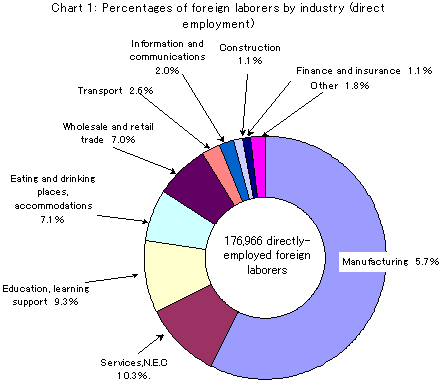
Taking a look at "manufacturing" from among these categories, there were high numbers of foreign laborers in such sub-categories as "manufacture of transportation equipment" (1,306 places of business [composition ratio in "manufacturing" of 11.7%] with 28,060 foreign laborers [27.2%]), "manufacture of food, beverages, etc." (1,782 places [15.9%], 18,626 laborers [18.0%]), "manufacture of electrical machinery, equipment, and supplies" (1,053 places [9.4%], 9,308 laborers [9.0%]), and "manufacture of apparel and other finished products made from fabrics and similar materials" (1,550 places [13.9%], 10,186 laborers [9.9%]).
The highest numbers of foreign laborers were also reported in "information services" in the "information and communications" industry (773 places of business [composition ratio in "information and communications" of 83.2%] with 2,946 foreign laborers [82.5%]), "general eating and drinking places" of the "eating and drinking places, accommodations" industry (550 places of business [composition ratio in "eating and drinking places, accommodations" of 52.8%] with 10,380 foreign laborers [81.6%]), "school education" of the "education, learning support" industry (947 places of business [composition ratio in "education, learning support" of 84.3%] with 12,665 foreign laborers [75.4%]), and "miscellaneous business services" of the "services, N.E.C." industry (965 places of business [composition ratio in "services, N.E.C." of 38.2%] with 9,761 foreign laborers [52.6%]). |
| ii. | By size of place of business In terms of size of place of business, two categories made up approximately 50% of all places of business and foreign laborers. These were "100 to 299 people", which had 6,344 places (composition ratio of 28.7%) and 54,416 foreign laborers (30.2%), and "50 to 99 people", which had 5,472 places (24.7%) and 26,638 laborers (14.8%) (Chart 2). |
| iii. | Number of foreign laborers per place of business The average number of foreign laborers per place of business (number of foreign laborers divided by number of places of business) was 8.1 laborers (7.6 laborers in the previous year).
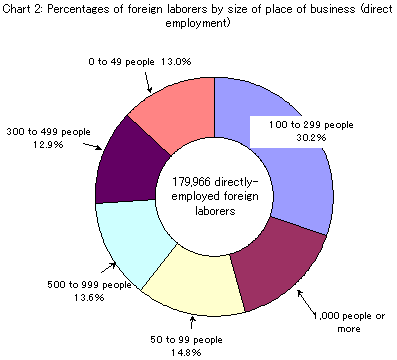
|
